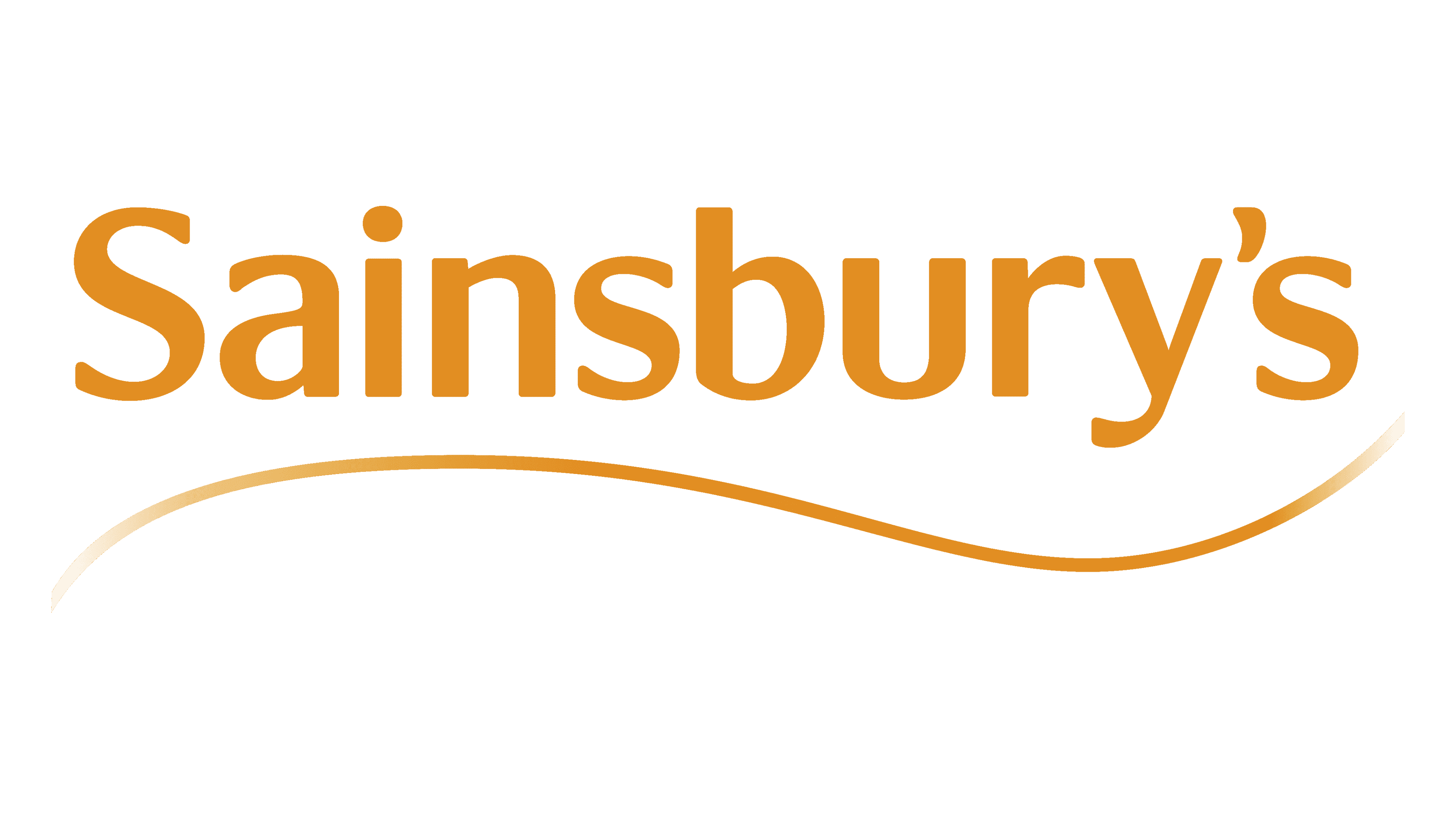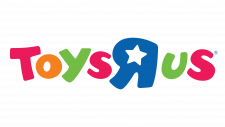Sainsbury’s Logo
Sainsbury’s, a British supermarket chain and the second largest in the UK, operates around 1,400 locations. Its key revenue streams include retail sales of groceries, household products, clothing, and online grocery delivery. Additionally, Sainsbury’s offers financial services and engages in wholesale and commercial operations. The Tu clothing brand is also a significant part of its business. The company, headquartered in London, is known for its strong brand reputation and extensive product range. As of 2022, Sainsbury’s reported a revenue of £29.895 billion. The largest shareholder is the Qatar Investment Authority, holding 14.99% of the company. Key competitors include Tesco, Asda, Morrisons, Aldi, Lidl, and Waitrose. Sainsbury’s has strategically positioned itself in the market through partnerships with suppliers and local farmers, focusing on customer service, marketing strategies, and leveraging its strong brand and workforce.
Meaning and history
Sainsbury’s, an emblem of British retail, has a rich history marked by strategic evolution and family heritage. It originated in 1869 as a small dairy shop in London, established by John James Sainsbury and his wife Mary Ann. Their philosophy of offering high-quality products at lower prices quickly resonated with consumers, leading to the rapid expansion of their enterprise.
By the early 20th century, Sainsbury’s had transformed into a chain of stores, unified under the Sainsbury brand. The company’s growth was driven by a commitment to quality and cleanliness, setting new standards in retail.
The 1950s marked a significant shift for Sainsbury’s as it adopted the self-service format, a concept inspired by American retail trends. This innovative approach revolutionized the shopping experience, leading to larger stores and enhanced customer convenience.
Sainsbury’s was a pioneer in developing its own-brand products, seeking to offer quality comparable to national brands but at more affordable prices. This strategy further cemented its competitive edge in the market.
The latter part of the 20th century saw Sainsbury’s transitioning from a family-run business to a publicly traded company, following its 1973 stock market debut. This transition heralded a new era of expansion, diversification, and modernization, including the establishment of Sainsbury’s Bank in the 1990s.
In recent decades, Sainsbury’s has navigated a more competitive and rapidly evolving retail landscape, marked by challenges such as the blocked merger with Asda in 2018. Despite these challenges, Sainsbury’s has remained adaptive, focusing on online shopping and sustainable practices.
Sainsbury’s stands as a testament to its ability to evolve while maintaining its core principles of quality and value. With the Qatar Investment Authority as its largest shareholder, Sainsbury’s continues to be a significant player in the global retail market, illustrating the enduring legacy of its founders and its resilience in an ever-changing industry landscape.
What is Sainsburys?
Sainsbury’s is a renowned British supermarket chain, known for its extensive range of products including groceries, clothing, and financial services. Established in 1869, it stands today as one of the UK’s largest retailers, blending tradition with innovation to cater to a diverse customer base.
1869 – 1960
The logo displays the name “J SAINSBURY” in a strong, serif font that exudes a classic and authoritative air. Each letter stands in capital form, suggesting a sense of heritage and stability. The typeface is traditional, indicative of a well-established entity with a long history. This design choice aligns with the branding of a company that has weathered the test of time. The name itself is presented without additional embellishments, communicating confidence in the brand’s recognition and legacy.
1960 – 1999
The logo presents the name “J SAINSBURY” in a sans-serif, rounded typeface, creating a modern and approachable look. The choice of a warm orange hue adds a sense of friendliness and energy, resonating with a contemporary audience. This is a stark shift from the previous iteration’s classic serif font and monochrome palette, signaling a brand keeping pace with the times.
The use of all capital letters remains, lending a sense of continuity and stability. However, the abandonment of the serif and the adoption of a brighter color palette reflect a strategic rebranding towards a more accessible and less formal corporate identity. The simplicity of the design, devoid of any graphic elements or embellishments, suggests a clear and direct approach to branding, emphasizing the company name without distraction.
This logo’s minimalist aesthetic aligns with current design trends, emphasizing functionality and ease of recognition across various media platforms. The rebranding to this logo demonstrates Sainsbury’s commitment to staying relevant and resonant in a rapidly evolving retail landscape.
1960 – 1999
The updated logo features the name “SAINSBURY’S” in a bold, sans-serif typeface, with an added apostrophe and ‘S’ at the end, which wasn’t present in the previous version. The font maintains the rounded character of the letters, contributing to the logo’s friendly and welcoming feel. The color remains a vibrant orange, symbolizing energy and warmth, which can be associated with the brand’s focus on fresh, quality products.
This evolution in the logo includes a possessive form, personalizing the brand and subtly emphasizing the company’s commitment to its customers. It’s a modern take on retail branding, aiming to create a more personalized relationship with the shopper.
The simplification of the design, moving from a detailed serif to a cleaner sans-serif font, reflects a broader trend in corporate rebranding towards minimalism and clarity. It speaks to a more modern and streamlined approach to business while maintaining the heritage color that links back to the company’s long history.
The minimalist design ensures versatility across various platforms, from storefront signage to digital applications, indicating Sainsbury’s adaptability to the digital age. This logo is a strategic move towards remaining relatable and competitive in a fast-moving consumer market.
1994 – 1999
The logo shows “Sainsbury’s” in a serif font that harkens back to a more classic style, contrasting sharply with the previous sans-serif iteration. The deep blue hue replaces the vibrant orange, representing dependability and trust. The lettering has a more traditional, refined elegance, reflecting perhaps a nod to the brand’s long-standing history.
Comparing it to its predecessor, this logo seems to assert a more timeless and sophisticated identity. The transition from a modern, rounded typeface to a more traditional serif font suggests a strategic shift in brand positioning—possibly to appeal to consumers’ sense of nostalgia or to distinguish itself in a marketplace where modernist branding is prevalent.
1999 – Today
The logo showcases the name “Sainsbury’s” in a fluid, sans-serif typeface with an orange hue. This design signifies a blend of modernity and approachability. The vibrant orange color is maintained, ensuring brand continuity and recognition. The apostrophe before the final ‘s’ adds a personal touch, implying ownership and a personalized shopping experience.
Compared to the previous blue serif logo, this represents a return to a more simplified and modern look, mirroring the trend in corporate branding toward clean and versatile designs that are easily adaptable across various platforms. The shift back to orange from blue could be aimed at invoking warmth and vibrancy, which are attributes commonly associated with the brand. This logo iteration appears to strike a balance between modern retail dynamics and the company’s storied heritage.
2013 – Today
The logo features the brand name “Sainsbury’s” in a flowing, cursive-like typeface that imbues a sense of movement and dynamism. The swish underlining the text adds to this sense of motion, giving the impression of swiftness and efficiency. The golden-orange gradient of the text evokes warmth and a friendly, inviting atmosphere, aligning with the company’s aim to be seen as approachable and customer-oriented.
The gradient effect on the lettering adds a contemporary touch, suggesting a fresh, up-to-date approach while maintaining the familiar orange color scheme synonymous with Sainsbury’s brand identity. The underlying swish could also be interpreted as a smile, subtly creating a positive association with the shopping experience at Sainsbury’s.

















